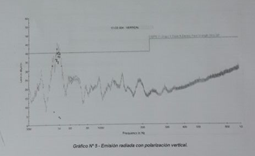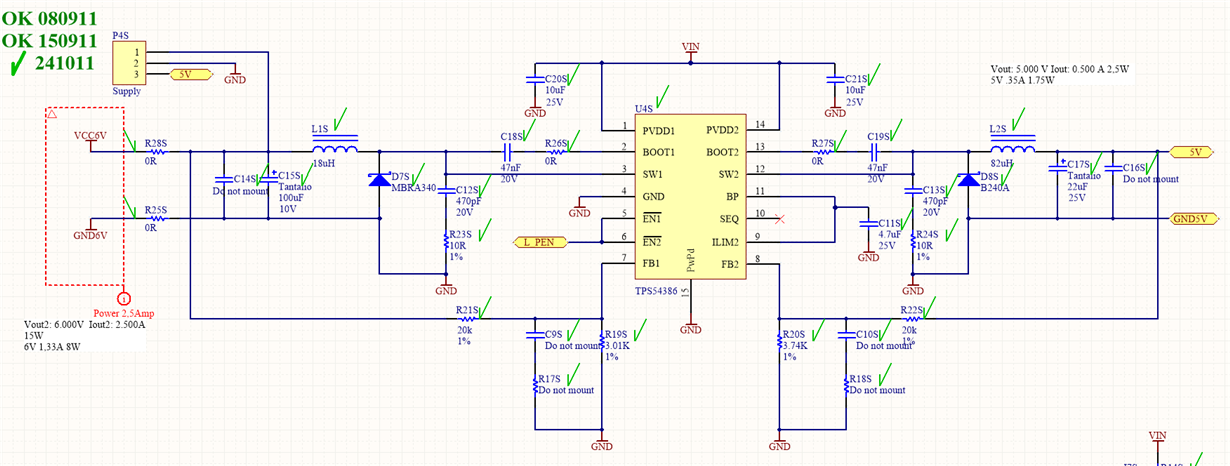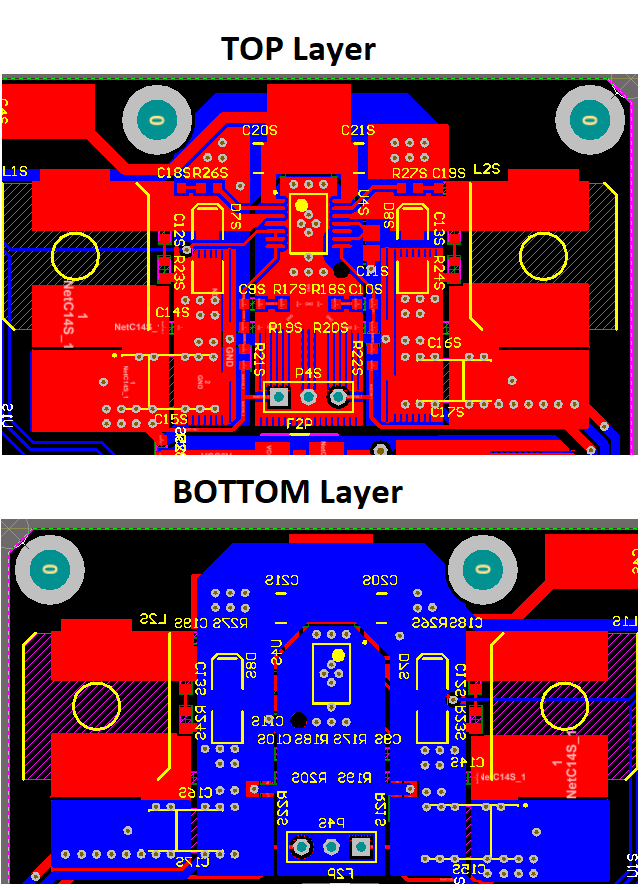Dear TI,
My name is Bruno and I'm from Argentina.
I have designed a product which use TPS54386PWPR to provide 5v and 6v. The first one is for digital modules and the second one for a small air compresor controller.
The thing is we made measure the emitted radiation and we have a peak around 50 MHz, exceeded allowed limits for this kind of product. This is the measure of the laboratory report:
We made our test with a RF explorer loop probe (https://www.digikey.com/products/en?keywords=1597-1409-ND) and found the emission over the TPS chip so we want to ask if there's any workaround or known issue reported? The Schematic and Layout are:
The main peak of the radiation is on top of U4S (TPS54386) and decrease slightly at the inductors. Beyond this module the radiated peak decrease significantly.
We know one solution could be shield this module in order to improve EM emission but we want to try solve it with the minimum parts adition. If not we have to make a new PCB and all tests again and this is (a lot of) time and money.
Thank you in advance for your time.
Best regards,
Bruno


